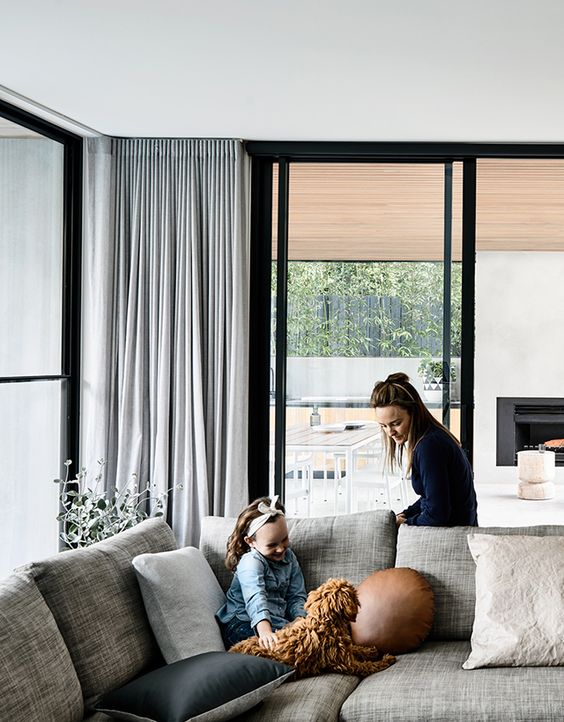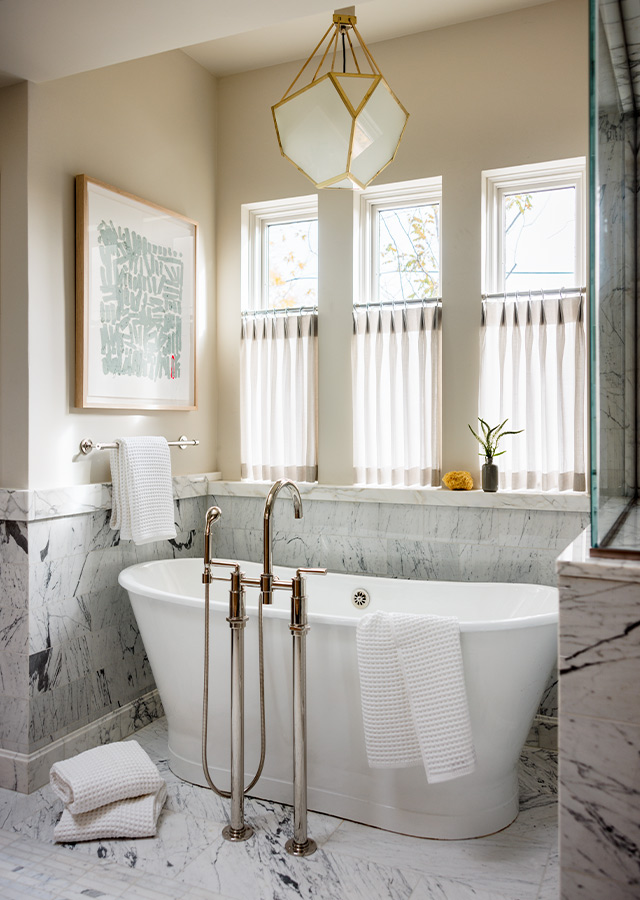The Ultimate Overview to Blinds: Kinds, Benefits, and Picking the Right Fit for You
The world of home window treatments is vast and varied. Blinds can be found in many styles, each offering unique advantages for various setups. Recognizing these options is important for making educated decisions. Furthermore, factors like material choice and space performance play a considerable duty. As one considers the best balance in between aesthetics and practicality, the nuances of measuring and preserving blinds also become crucial elements. What should one focus on when choosing the ideal window service?
Kinds of Blinds: A Comprehensive Summary
Blinds work as both aesthetic and practical aspects in indoor style, supplying various alternatives to fit diverse choices and needs. Among one of the most preferred types are Venetian blinds, defined by horizontal slats that can be adjusted for light control and personal privacy. Roller blinds, understood for their simpleness and versatility, can be found in a variety of patterns and materials, making them suitable for modern and typical setups. Vertical blinds, normally utilized for larger windows or gliding doors, permit for simple modification and are usually made from textile or vinyl.
Roman blinds, with their classy folds up, include a touch of refinement to any type of room, while mobile shades give insulation and energy efficiency. Additionally, bamboo blinds offer a natural, environment-friendly option, instilling spaces with heat. Each type has one-of-a-kind functions and designs, guaranteeing property owners can locate the excellent fit for their particular decoration and functional demands.
Benefits of Putting Up Blinds in Your Home
The installment of blinds in a home offers numerous substantial advantages. They give boosted privacy control, enabling homeowners to control presence from the outside. Furthermore, blinds contribute to energy effectiveness by aiding to manage interior temperatures, decreasing the dependence on home heating and cooling systems.
Improved Personal Privacy Control
Mounting blinds uses a substantial advantage in privacy control when home owners seek to improve their living rooms. Blinds offer a functional solution for managing exposure from both the inside and outside of the home. By changing the slats or elevating the blinds, people can conveniently take care of the quantity of light getting in while simultaneously blocking the sight from outdoors. This adaptability permits house owners to produce a comfortable atmosphere without compromising all-natural light. Furthermore, various designs and products are offered, ensuring that homeowners can choose options that effortlessly blend with their decor while boosting privacy. Eventually, the installation of blinds functions as an efficient means to protect individual area, urging relaxation and comfort within the home atmosphere.
Energy Efficiency Renovation
Mounting blinds not only boosts personal privacy however likewise significantly adds to power efficiency in the home. By managing natural light and decreasing warmth transfer, blinds can assist maintain a regular interior temperature level. Throughout warmer months, closing blinds can shut out extreme sunshine, thus lowering the dependence on cooling. Alternatively, in cooler months, they can give insulation by trapping warmth, minimizing heating costs. In addition, energy-efficient blinds, such as mobile shades, are made particularly to minimize energy loss. By purchasing top quality blinds, home owners can create an extra comfortable living atmosphere while likewise decreasing power costs. Inevitably, the installment of blinds works as a sensible service for those seeking to enhance both comfort and power performance in their homes.
Just how to Choose the Right Blinds for each and every Area
How can one figure out one of the most ideal blinds for every space in a home? The choice procedure begins with evaluating the area's objective and atmosphere. For example, in living areas, flexible blinds that enable light control while making sure personal privacy are suitable. In rooms, blackout blinds can boost sleep quality by shutting out exterior light.
Kitchen areas and washrooms call for moisture-resistant options to hold up against humidity, making plastic or synthetic timber blinds appropriate choices. Furthermore, the preferred aesthetic plays an essential duty; coordinating blinds with the room's decor boosts the overall atmosphere.
Think about the amount of all-natural light each room gets; lighter blinds may be more effective for dark rooms, while darker choices can include heat to sunlit rooms. Ultimately, recognizing certain requirements and preferences for functionality and design will certainly assist home owners in making educated decisions tailored to each room's distinct needs.
Material Options: Timber, Vinyl, Material, and Extra

Timber Blinds Benefits
Wood blinds are a look at this web-site prominent choice amongst home owners seeking a blend of looks and performance. One substantial benefit of wood blinds is their natural charm, offering a cozy and inviting appearance that enhances any kind of interior style. They are readily available in numerous coatings and shades, enabling customization to match individual style. In addition, timber blinds offer excellent light control and privacy, as their slats can be conveniently adapted to filter sunlight while maintaining seclusion. Their longevity is another benefit; with proper treatment, timber blinds can last for years without shedding their charm (Phoenix blinds repair). Furthermore, they have insulating buildings, helping to control interior temperatures and possibly decreasing energy expenses. In general, wood blinds combine beauty and practicality, making them an excellent choice for many families
Plastic Toughness Features
Plastic blinds stand out for their outstanding sturdiness, making them a useful choice for numerous environments. These blinds are resistant to wetness, making them optimal for areas such as washrooms and kitchen areas where humidity can be a concern. Unlike wood, vinyl does not warp, split, or discolor under sunlight, ensuring resilient efficiency and marginal upkeep. In addition, they are available in a range of designs and colors, enabling property owners to tailor their look without sacrificing sturdiness. Plastic blinds are additionally simple to clean; a basic clean with a wet cloth is frequently adequate to keep them looking fresh. Overall, their resilience and reduced maintenance make plastic a preferred option amongst property owners seeking both performance and aesthetic allure.

Material Options Overview
Blinds can be found in a selection of textile alternatives that satisfy different aesthetic and practical demands. Usual products include timber, material, and plastic, each offering one-of-a-kind advantages. Wood blinds give a traditional, warm visual and exceptional insulation but need maintenance to avoid bending. Vinyl blinds are sturdy and moisture-resistant, making them optimal for high-humidity areas like restrooms and kitchen areas. Textile blinds, offered in various colors and patterns, use flexibility and soft qualities, improving home decoration while offering differing levels of light filtration. Additionally, alternatives like faux timber provide the appearance of all-natural wood with included resilience. When selecting blinds, it is crucial to examine the specific requirements of each room to guarantee peak performance and design.
Gauging and Setting Up Blinds: Tips for Success
Although determining and installing blinds may appear simple, mindful interest to information is very important for attaining a best fit. Initially, it is necessary to determine the home window framework precisely, noting both the size and height. For within mounts, deduct a little quantity from the size to ensure a clean fit, while outside installs should expand roof blinds beyond the structure for much better light control and aesthetics. Making use of a steel measuring tape is advised for accuracy.
When installing, gather all needed devices, such as a level, drill, and screws. Adhering to the supplier's directions is important to assure proper setup. It is suggested to pre-drill openings to avoid damaging the brackets. Additionally, having a 2nd individual can make the procedure smoother, specifically when raising larger blinds. After installation, test the blinds to confirm they run smoothly and adjust as essential for maximum capability.
Maintenance and Take Care Of Durable Blinds
Appropriate maintenance and care can substantially expand the lifespan of window coverings. Routine cleaning is necessary; utilizing a soft towel or a microfiber duster can successfully remove dirt without scraping surfaces. For much deeper cleaning, a gentle service of soap and water is recommended, used with a soft sponge, assuring that no wetness seeps into the systems.
For textile blinds, area cleaning is suggested, while wood blinds ought to be treated with a wood-safe cleaner to maintain their coating. Avoid revealing callous extreme dampness, warmth, or direct sunshine, which can lead to bending or fading.
In addition, routine evaluation of cables and systems can stop damage. It's wise to adhere to manufacturer guidelines for certain products, as various blinds may have one-of-a-kind treatment demands. By embracing these simple upkeep practices, house owners can assure their blinds continue to be functional and aesthetically pleasing for several years to find.
Often Asked Inquiries
Can Blinds Help In Reducing Power Costs in My Home?
Blinds can properly lower power expenses in a home by offering insulation, blocking warm throughout summertime, and keeping heat in winter. Their ability to regulate light and air circulation enhances energy effectiveness throughout the year.
Are There Child-Safe Options for Blinds?
Yes, there are child-safe options for blinds. These consist of cordless styles, retractable cords, and safety and security devices that remove dangling cords, ensuring a protected environment for children while keeping capability and aesthetic allure in homes.

Exactly How Do Blinds Contrast to Curtains or Shades?
Blinds commonly offer a lot more precise light control and room efficiency than tones or drapes. Phoenix blinds repair. They are frequently easier to preserve and cleanse, while drapes provide a softer visual, and tones can offer varying insulation benefits
Can I Customize the Design And Color of My Blinds?
Yes, blinds can be personalized in both shade and style. Numerous suppliers provide a variety of options, enabling consumers to pick materials, patterns, and hues that suit their individual aesthetic and home decor.
What Is the Average Life Expectancy of Different Kinds Of Blinds?
The ordinary life-span of blinds differs: timber blinds last 5-10 years, synthetic wood 7-10 years, light weight aluminum 5-10 years, and fabric tones around 5 years, depending on exposure, use, and upkeep to sunlight.
Kitchen areas and shower rooms require moisture-resistant alternatives to hold up against moisture, making plastic day night shades or artificial timber blinds appropriate options. Wood blinds offer all-natural elegance and heat, while plastic gives resilience and convenience of maintenance. One substantial benefit of timber blinds is their all-natural charm, providing a warm and welcoming appearance that boosts any kind of interior style. Additionally, wood blinds offer excellent light control and privacy, as their slats can be quickly adjusted to filter sunshine while maintaining privacy. For material blinds, place cleansing is a good idea, while wood blinds must be treated with a wood-safe cleaner to keep their finish.